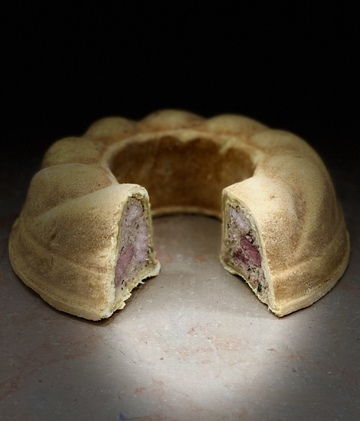
©
Rémi REYNON

Often confused with the jésus or the rosette, the saucisson de Lyon can be distinguished by its dark red colour and the pieces of fat cut into small cubes. In the mouth, it is more tender and milder than other dry-cured sausages.
At first glance, the recipe for the Saucisson de Lyon, which can be traced back to around 1830, seems simple: pork belly fat and lean meat. Beef is sometimes used and, in the past, donkey meat.
However, its artisanal production method requires particular know-how and lots of time. The meat must first be sorted by hand to remove the nerves and trim the fat, before chopping it very finely and seasoning it with salt, pepper and garlic. The pork fat is cut into small cubes using a knife before being added to the mixture. After cooling, it is stuffed into natural sausage casings, which are tied up by hand. The saucisson is then placed in a curing chamber for a few days and left to dry for five to six weeks.
A traditional, but almost forgotten recipe
In Lyon, only a handful of establishments continue to make this iconic product.
A more recent arrival on the scene, Jérémie Crauser, of Crauser & Bello (located near Place Carnot), began to produce it a few months ago.
At Patrimoniam, in Rillieux-la-Pape, Sophie, Stéphane and Frédéric have brought a modern approach to this traditional recipe. Since 2020, they have offered an authentic organic Saucisson de Lyon, which is nitrite-free and made using local meat (50% pork and 50% beef). This speciality can be found in many organic grocery stores and certain restaurants around the Lyon urban area.
How to pair it with wine? Choose something simple and not too strong, to allow it to express all of its flavours.
Food
Shopping
Special feature
Discoveries